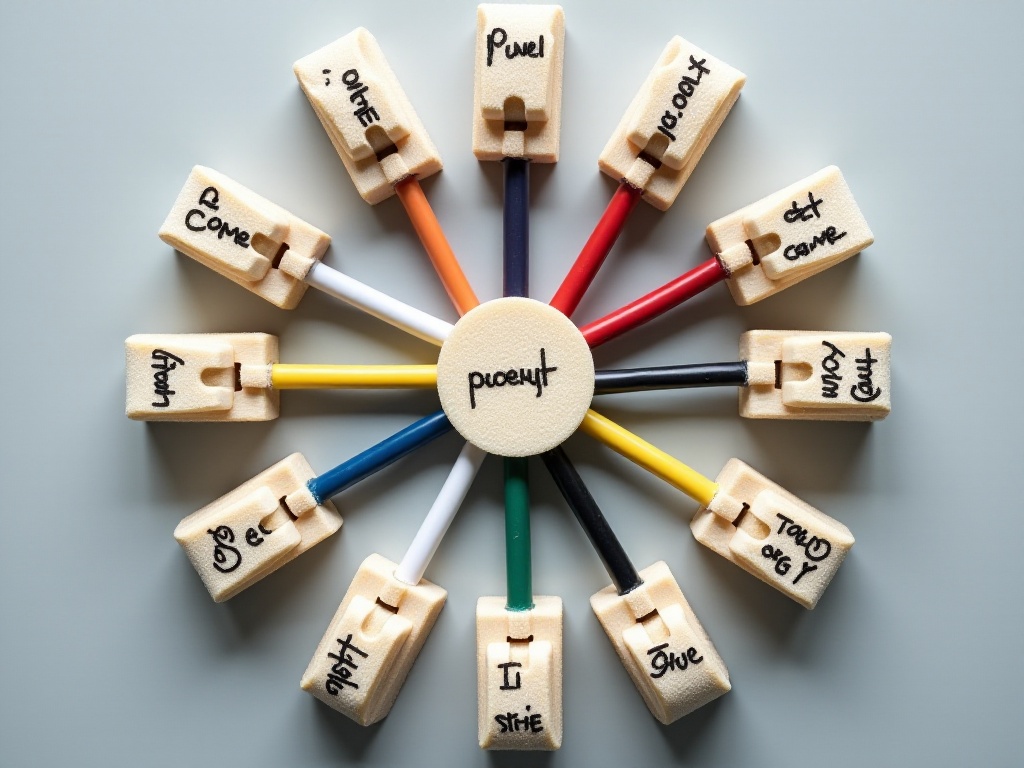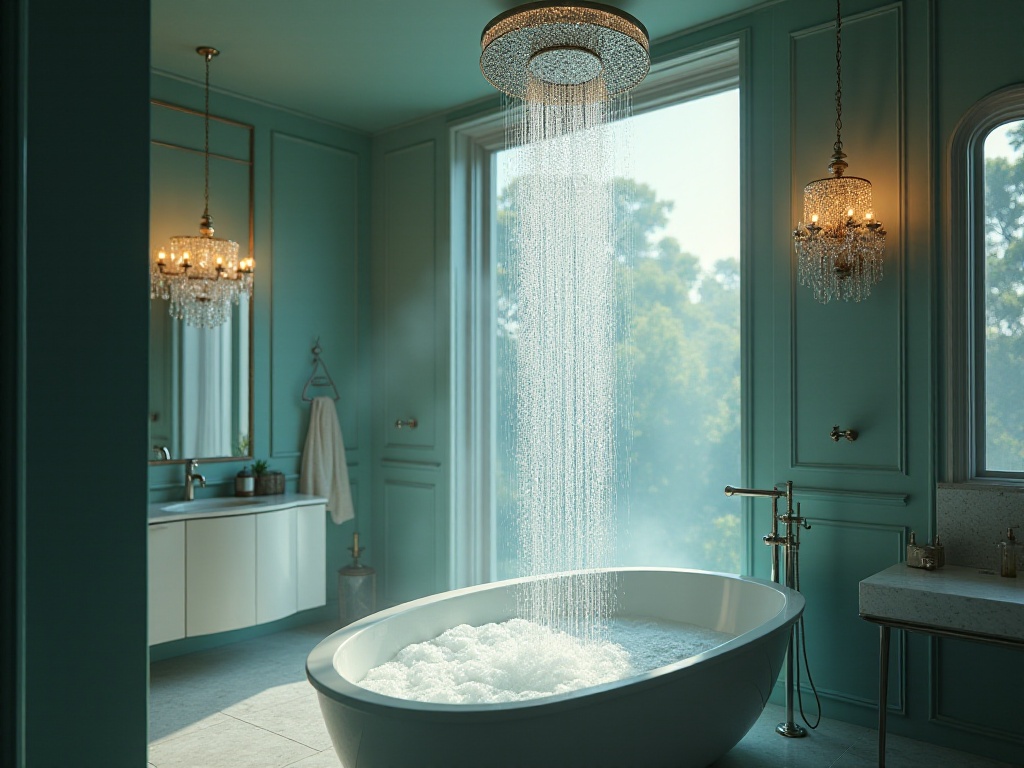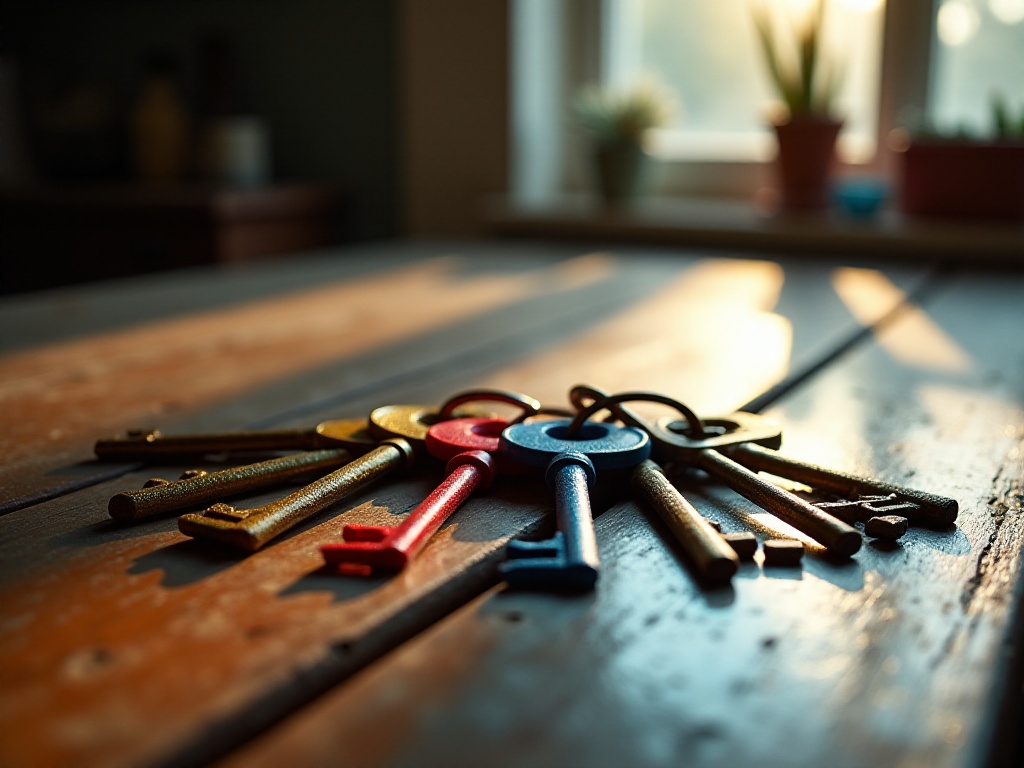Introduction
Rushing out the door for work in the morning but can't find your keys; staring at a tangled mess of data and charging cables on your desk, not knowing where to start; clothes piled chaotically in your closet, having to turn everything inside out just to find something suitable to wear... Are these common frustrations in your daily life? Actually, mastering some simple organization techniques can immediately make your life more orderly.
Key Management
Keys are items we use every day, yet they're the easiest to lose and mix up. When I first started working, I often confused my house keys with my office keys. Once I nearly inserted my house key into the office door lock, and my colleagues teased me about it for a long time. Later, I discovered a particularly useful trick: using nail polish to mark different keys.
I bought several bottles of nail polish in different colors - red for car keys, blue for house keys, and yellow for office keys. I painted a small spot of the corresponding color on each key head, making them instantly recognizable even in dim light. However, when choosing nail polish colors, it's important to select bright, easily distinguishable shades. I made the mistake once of choosing similar colors like dark blue and dark purple, which meant I still had to use my phone's flashlight to tell them apart when getting home at night.
Besides using nail polish markers, I also attached different keychains to each key. For instance, a cute cat charm for house keys and a simple metal ring for office keys, allowing quick identification by touch. Plus, these keychains add personality to the keys, making them less monotonous.
To prevent misplacing keys, I installed a key organizer board near the entrance. I found this board online - it not only holds keys but also has small compartments for coins and small items. The first thing I do when getting home is hang my keys on this board, so I don't have to search for them when leaving the next day. The board's design is simple and stylish, adding some decorative value to the entryway.

Cable Management
Speaking of headache-inducing items, various electronic device cables definitely rank in the top three. Computers, phones, tablets, headphones... each device comes with various data and charging cables, and without proper organization, they easily become a tangled mess. This used to be a constant source of frustration for me - not only was my desk cluttered with messy cables, but it also took forever to identify and untangle a specific cable when needed.
Later, I discovered a particularly useful method: using bread bag clips to organize power cords. These clips are just the right size, and almost every household has them. Here's how it works: first, neatly coil up the power cord, not too tight to avoid damaging the wire, then secure it with the plastic clip. Write the cable's purpose on the clip with a marker, like "iPhone charger" or "monitor cable." This not only keeps all cables neat but also makes it easy to find the one you need at a glance.
Besides using bag clips, I also use reusable velcro straps to secure thicker power cords. These straps are not only durable but can also be adjusted according to cable thickness. For devices that need frequent moving, like laptop chargers, I choose brightly colored straps for quick identification when packing.
To make my desk look neater, I installed a cable management tray underneath. This tray can store various cables, only exposing the parts needed for use. It also has clips to keep frequently used cables within easy reach, eliminating the need to bend down every time. This not only makes the desk look tidier but also makes cleaning much easier.
For rarely used cables, I store them in a transparent organizer box. The box is divided into several compartments, each labeled with the type of cable it contains. This way, I can find the right compartment directly when needed, without having to search through the entire box. The transparent design allows me to see the contents clearly, preventing items from getting lost.

Food Preservation
Food is essential to life, and food preservation is a science in itself. Especially for perishables like cheese, improper storage can lead to spoilage or loss of texture. I used to wrap cheese in plastic wrap but was never satisfied with the results. The cheese would either deform from being wrapped too tightly or become hard due to poor air circulation.
Later, I learned from a cooking show about using parchment paper to wrap cheese. The material is perfect for cheese storage, maintaining moisture while allowing proper air circulation. Cheese wrapped in parchment paper maintains its original texture and shape, and its shelf life is notably extended. Now I always keep some parchment paper in my kitchen, specifically for wrapping various cheeses.
Speaking of food preservation, seed storage is often overlooked. Many people now enjoy growing herbs or small vegetables at home, but seeds can easily sprout or mold if not stored properly. I recommend using airtight glass jars or plastic containers to store different types of seeds, kept in a cool, dry place.
Each storage container should be clearly labeled with the type of seeds and their purchase or collection date. This helps track seed freshness and prevents mixing different types. I also add a small packet of food-grade desiccant to each container for additional moisture protection, being careful to use only food-grade varieties to avoid contaminating the seeds.
For moisture-sensitive foods like cookies and chips, I use sealing clips for storage. These clips prevent food from spoiling while maintaining texture. Sometimes when a package of snacks isn't finished, I simply seal it with a clip and store it in the cabinet - it stays just as crispy the next time.
Refrigerator organization is also an art. I store different types of food in separate zones - vegetables and fruits in the lower crisper drawers, cooked and ready-to-eat foods in the middle shelf, and beverages and condiments in the door compartments. Each zone is labeled so other family members can easily find what they're looking for. This categorized storage also prevents flavor transfer between different foods, maintaining their original taste.

Bathroom Cleaning
The bathroom is the area most prone to dirt accumulation, especially the shower head, which can easily become clogged with limescale if not cleaned regularly. I used to find cleaning the shower head particularly troublesome, either scrubbing with various cleaners or replacing it entirely, which was both time-consuming and expensive.
Then one day, I discovered a simple cleaning method: filling a plastic bag with white vinegar and securing it around the shower head with a rubber band, completely submerging it in the vinegar solution. After about an hour, remove it and rinse with clean water, and you'll find the limescale has dissolved. This method is simple, eco-friendly, and cost-effective, achieving great cleaning results with just ordinary white vinegar.
Foggy bathroom mirrors are another common annoyance. After every hot shower, the mirror fogs up, requiring constant wiping to see clearly. I later learned to treat the mirror surface with shaving cream, which works exceptionally well. Simply apply a thin layer of shaving cream to the mirror surface, then wipe it clean with a dry cloth. Mirrors treated this way won't fog up when exposed to moisture, and the effect lasts for several days.
Bathroom storage is also important. I installed several suction-cup storage racks specifically for items like shower gel and shampoo that are frequently used. These racks don't require drilling, attach directly to the wall, and are waterproof and moisture-resistant, perfect for bathroom use. To prevent the racks from falling, I regularly check the suction cups' effectiveness and reinstall them when necessary.
Towel organization is crucial too. I installed a multi-tier towel rack behind the bathroom door that can hold several towels simultaneously. Each family member has their designated spot, preventing mix-ups. The multi-tier design allows towels enough space to dry properly, preventing odors from developing when stacked together.

Safe Cleaning
Safety always comes first in home cleaning, especially when handling dangerous items like broken glass. If not handled properly, it's easy to get injured. I've found that using a wet sponge or wet paper towel is particularly effective for cleaning up broken glass, especially those tiny fragments that brooms can't sweep up.
The specific method is: first sweep up the large pieces of glass with a broom, then gently wipe the surface with a wet sponge or paper towel. The glass fragments will stick to the wet surface, safely removing those tiny pieces that are hard to see. Remember to dispose of the used sponge or paper towel immediately afterward; don't keep it for reuse.
For families with children, toy cleaning and disinfection is also important. Children's toys often fall on the floor or get put in their mouths, and bacteria can easily grow if not cleaned promptly. For Lego blocks, for example, they can be disinfected with diluted bleach solution. The specific method is: first soak the blocks in warm water, add an appropriate amount of diluted bleach, soak for 15-20 minutes, then rinse thoroughly with clean water, and finally air dry in a ventilated place.
However, when using bleach, safety is paramount. Always dilute according to package instructions and operate in a well-ventilated environment. Make sure toys are completely dry after disinfection, ensuring no disinfectant residue remains, so they're safe for children to play with.
Besides toys, household textiles like bedding also need regular cleaning. I choose appropriate washing methods based on different fabric materials - for example, cotton sheets can be washed in hot water, while silk items need cold water hand washing. After washing, dry promptly to avoid bacterial growth in humid conditions.

Creative Entertainment
After discussing these practical organization and cleaning tips, let's talk about something lighter. Many young people now enjoy hosting parties at home but worry about disturbing neighbors. You can try a novel party format called "Silent Disco." Each participant wears wireless headphones and can freely switch between different music channels. This way, even if people dance energetically, no sound reaches the outside, avoiding disturbance to others.
I hosted a silent party at home last month, and it was a great success. Everyone wore headphones and moved to their preferred music, which looked quite interesting. Some people were dancing to upbeat music, others swaying to slow songs - though everyone was dancing to different rhythms, everyone had fun. And since noise wasn't an issue, the party could continue late into the night.
There's also an interesting party game called "Music Bingo." This game combines traditional bingo with music knowledge, with simple rules: each person has a card with different song titles. The host randomly plays music clips, and if participants find the corresponding song title on their card, they can mark it. Like regular bingo, whoever connects a line first wins.
This game not only tests everyone's music knowledge but also livens up the party atmosphere. We often debate song titles or sing along together, making the whole process full of joy. The game's difficulty can be adjusted based on participants' age and music taste by choosing familiar songs, allowing everyone to participate.

Conclusion
Organization might seem like a small matter, but doing it well can truly make life more relaxed and enjoyable. When you no longer have to scramble for keys in the morning, when your desk isn't occupied by messy cables, when your living environment becomes neat and orderly, you'll find your quality of life has significantly improved.
Actually, many of life's annoyances can be solved through simple tricks - the key is developing good living habits and maintaining these organization and tidying methods. If you have any unique organization tips, feel free to share them in the comments, letting us make our homes neater and more comfortable together. Remember, small details in life often bring big changes. Let's start now and create a well-ordered, cozy home together.




